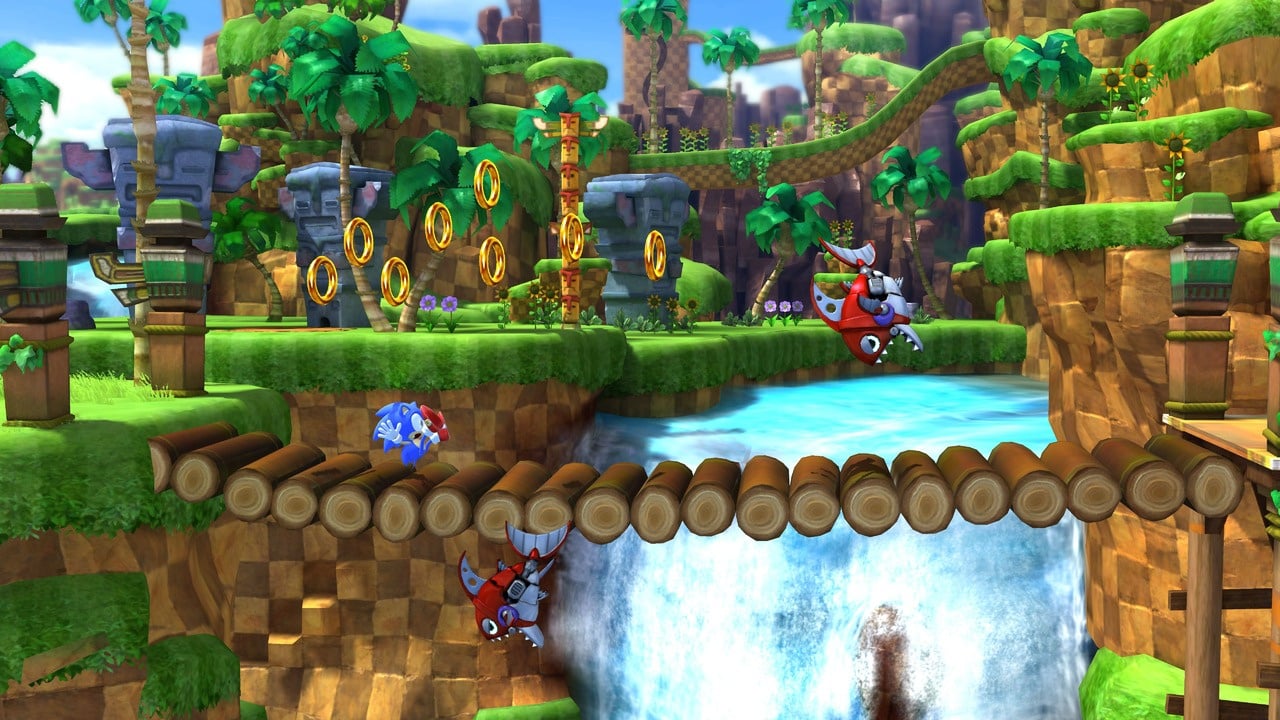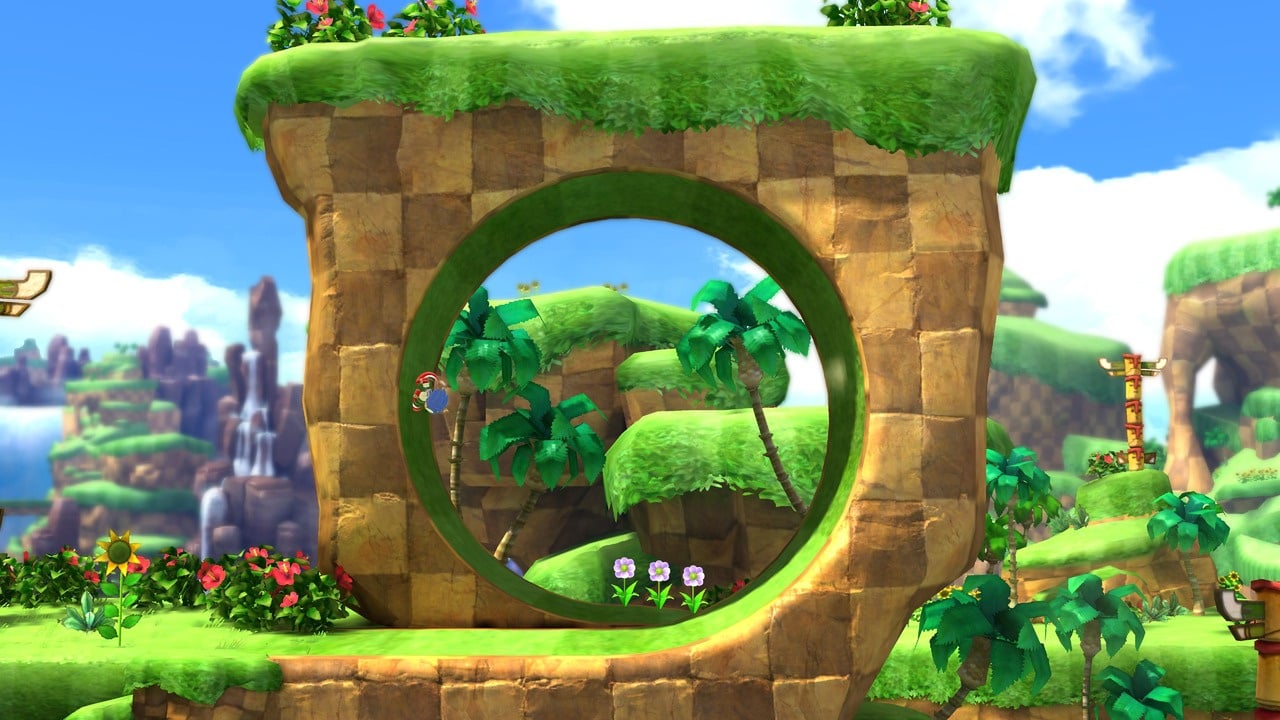The first (and only) level I saw was the Green Hill Zone, but it was split in two by the two generations of Sonic -- now does that name make more sense? Chubby/Classic Sonic explored the level strictly from a 2D plane with a focus on platforming, in line with the goal of classic Sonic titles. It seems that the extra pudge is making it a bit harder for Classic Sonic to get his feet off the ground, though, as jumping felt a bit too sticky for a game so focused on platforming.
Skinny/Contemporary Sonic, meanwhile, borrows his style from more recent games like Sonic Colors, focusing instead on speed and style -- thankfully, we didn't hear him say a word. Not yet, at least. The story conceit of Generations is that Sonic's friends have been pulled into "time holes," thus providing the tenuous (and unnecessary) justification for revisiting the older stages. It also means that Generations will explore specific eras of Sonic history. Green Hill Zone represents the Sega Genesis era, while other areas will represent the Dreamcast era and the "modern" era. It also means that we're at a high risk of encountering Sonic's friends.
While Sonic's older iteration stuck with a fixed 2D camera, the younger version is more brazen, switching from first-person to 2D and exploring many in-betweens along the way (controlled by the game and not the player, notably).
Though the skinnier, younger version of Sonic embraces speed and various camera angles (giving the impression of a deeper, more involved game), his version of Green Hill Zone felt more like an on-rails pinball machine. Skinny Sonic was tossed mercilessly around the stage with little inspiration from the Xbox controller, reminding me why I haven't been inclined towards Sonic titles in recent years. A handful of QTEs and scripted encounters helped to make this mode feel "bigger," but the actual interaction seemed distinctly scaled back to allow for cinematic events. It's a rather noticeable difference when played back-to-back with older Sonic's version of the same level, as intended.
Both versions featured something I'd never seen before in any Sonic title -- the ability to move into deeper planes. Sticking to the three-path formula of past games, this meant that the verticality of parts of levels was supplanted by depth in and out of the 2D plane, a bit like LittleBigPlanet. Before purists freak out: no, you cannot switch between planes whenever you'd like. Much like switching between different paths in a level, depth switching is handled at various intervals -- a hidden spring that pushes you in the right direction, for instance.





